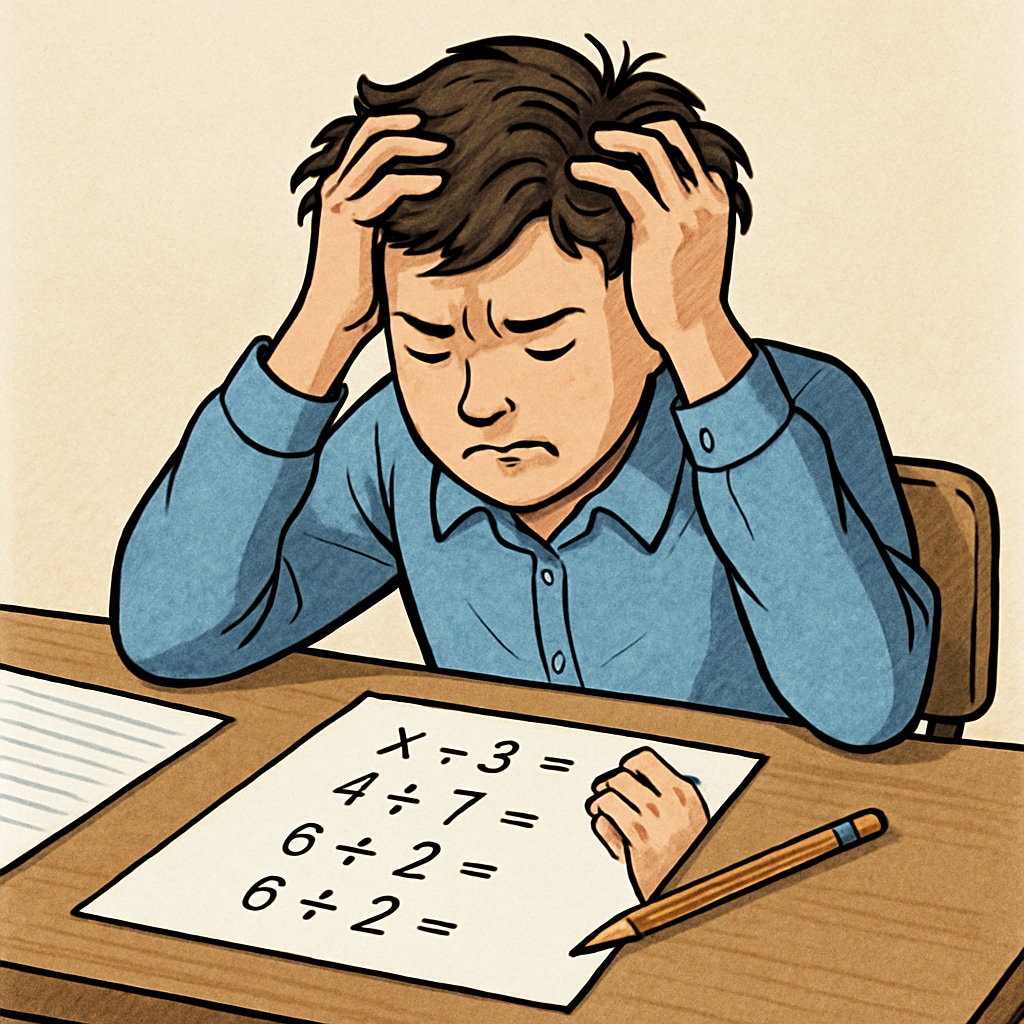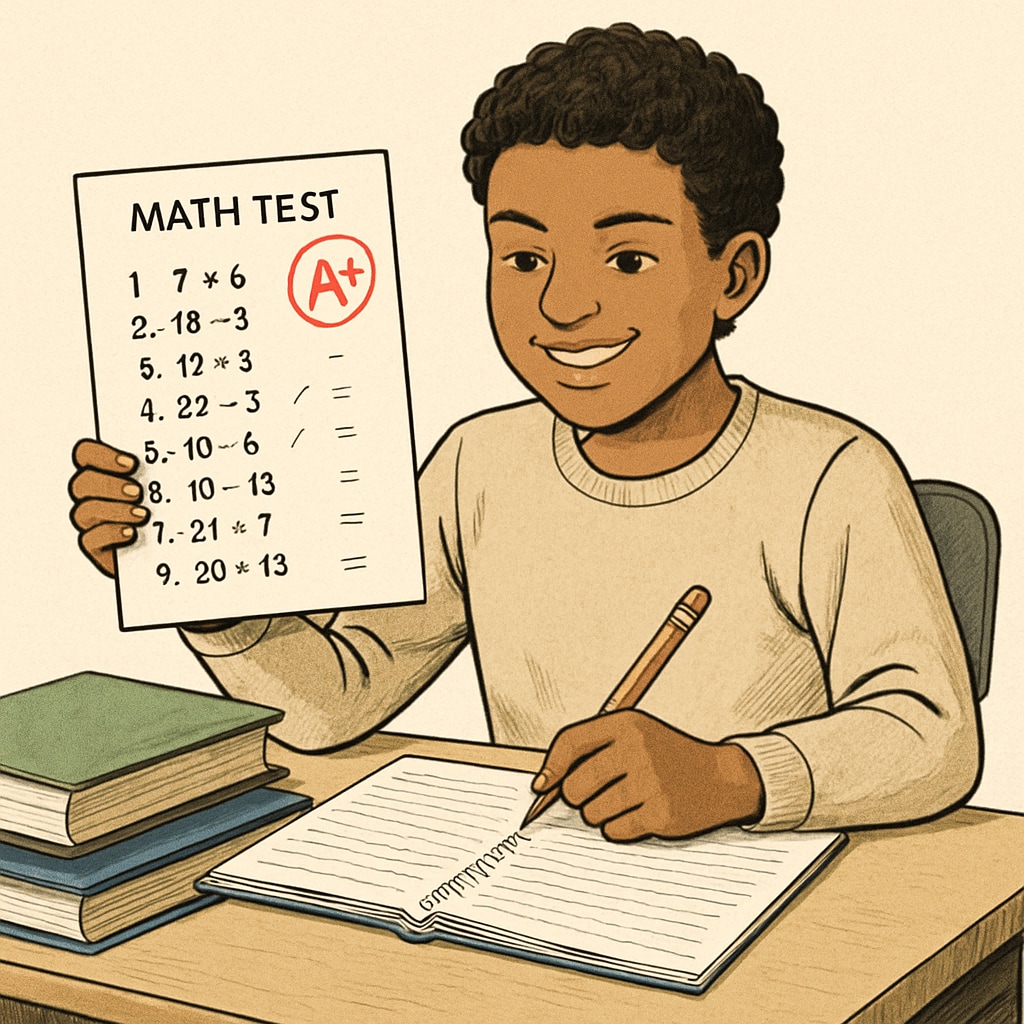Exam anxiety, particularly during math multiple-choice questions, is a common challenge many students face. This form of test-related stress can negatively impact performance, making even well-prepared students second-guess their answers. Understanding the root causes of exam anxiety and implementing effective strategies can help students regain their confidence and excel in assessments.
Understanding the Impact of Exam Anxiety on Performance
Exam anxiety affects students both mentally and physically, often impairing their ability to think clearly and make rational decisions. In multiple-choice math tests, this anxiety can lead to common pitfalls such as overanalyzing options, skipping key details in the question, or misinterpreting the problem altogether. Anxiety triggers the brain’s “fight or flight” response, which can disrupt the prefrontal cortex—the area responsible for logical thinking and decision-making.
For example, a study published in the Journal of Educational Psychology highlights that students with high levels of test anxiety are more likely to perform below their actual ability due to cognitive overload. This overload makes it harder to process information efficiently, especially under timed conditions.

Common Triggers of Math Test Anxiety
Several factors contribute to math-specific test anxiety. Understanding these triggers is the first step toward managing them effectively:
- Fear of Failure: Students often perceive math as a high-stakes subject, where mistakes feel more significant than in other subjects.
- Lack of Preparation: Insufficient practice or gaps in foundational knowledge can make students feel unprepared and vulnerable.
- Negative Past Experiences: A history of poor performance in math can create a mental block, making students overly cautious and doubtful.
- Pressure from Peers or Parents: Unrealistic expectations can amplify stress, leading to performance anxiety.
Addressing these triggers requires both a shift in mindset and practical strategies, which are discussed in the following sections.
Practical Strategies to Reduce Exam Anxiety
Overcoming exam anxiety involves a combination of mental preparation, effective study habits, and in-test strategies. Here are some actionable tips to help students improve their performance:
Mental Preparation
- Practice Relaxation Techniques: Deep breathing, mindfulness, or progressive muscle relaxation can help calm the mind and reduce physical symptoms of anxiety.
- Visualize Success: Positive visualization can boost confidence. Encourage students to imagine themselves confidently solving problems and completing the test successfully.
- Reframe Thoughts: Replace negative thoughts (“I always fail math tests”) with positive affirmations (“I have studied and am ready to try my best”).
Effective Study Habits
- Break Down Topics: Divide math concepts into smaller sections and focus on mastering one topic at a time.
- Practice Under Timed Conditions: Simulate exam scenarios to build familiarity and improve time management skills.
- Use Practice Tests: Practicing with multiple-choice questions can help students identify patterns and common traps.
In-Test Strategies
- Read Questions Carefully: Teach students to underline key information and identify what the question is asking.
- Eliminate Wrong Answers: Narrowing down options increases the probability of selecting the correct answer.
- Stay Focused: If anxiety creeps in, pause briefly, take a deep breath, and refocus on the question at hand.

Building Long-Term Confidence in Math
Confidence in math doesn’t develop overnight. It requires consistent effort and a positive approach to learning. Encourage students to celebrate small victories, such as mastering a challenging concept or improving their practice test scores. Additionally, seeking help from teachers, tutors, or peers can provide valuable support and reduce feelings of isolation.
Parents and educators also play a critical role in fostering a supportive learning environment. Emphasizing progress over perfection and reducing pressure can help students approach math exams with a calmer mindset.
In conclusion, while exam anxiety in math multiple-choice tests can be daunting, it is not insurmountable. By understanding its impact, addressing the root causes, and implementing effective strategies, students can regain their confidence and perform to the best of their abilities.
For further reading on test anxiety and strategies to overcome it, check out the resources on Britannica’s page on anxiety.


